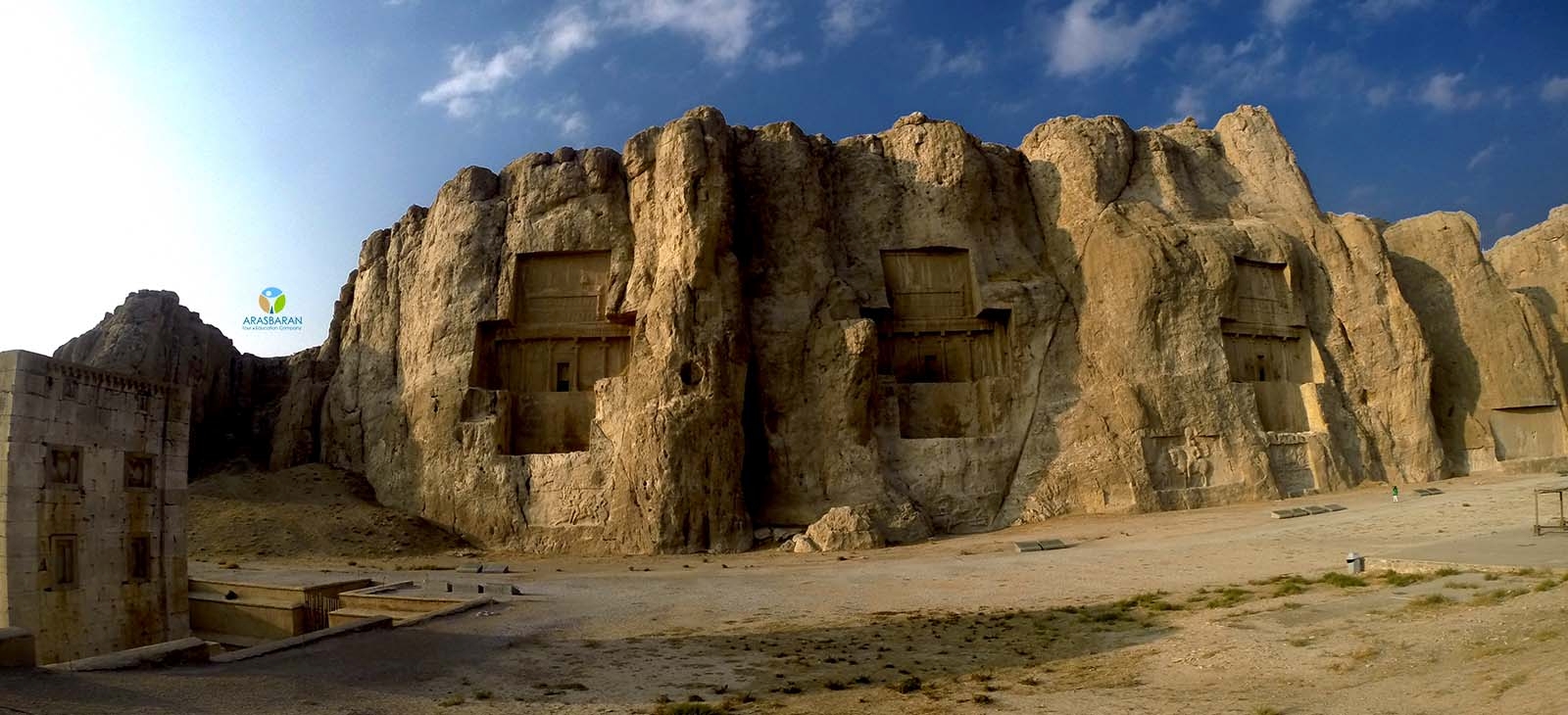Naqsh-e Rustam is one of the most spectacular and awe-inspiring ancient sites of the Achaemenid Empire, consisting of the colossal tombs of Persian kings dating back to the first millennium BC. It stands as a lasting memory of a once powerful empire that ruled over a significant portion of the ancient world.
Naqsh-e Rustam is one of the most spectacular and awe-inspiring ancient sites of the Achaemenid Empire, consisting of the colossal tombs of Persian kings dating back to the first millennium BC. It stands as a lasting memory of a once powerful empire that ruled over a significant portion of the ancient world.
Engraved on the façade of a mountain range considered sacred in the Elamite periods are the rock-cut tombs of Achaemenid rulers and their families dating to the 4th and 5th centuries BC, as well as richly decorated reliefs carved by the Sasanians in the 3rd century AD. In addition to being a royal necropolis, Naqsh-e Rustam became a major ceremonial center for the Sasanians until the 7th century AD.
Although there are four tombs, only one of them can be identified with certainty, as it is accompanied by a trilingual inscription. This is the tomb of Darius I, the third ruler of the Achaemenid Empire. Above the cross façade of Darius’ tomb is a panel with a relief. The relief depicts Darius, whose hands are raised in a gesture of worship, standing on a three-stepped pedestal in front of an altar. The king’s piety accords him divine protection, as the winged disc of Ahuramazda (the god of the Zoroastrian faith), is shown floating above his head. The relief also proclaims the might of the Achaemenid Empire, as the entire scene is supported by throne bearers representing the 28 nations under the empire.
The other three tombs at Naqsh-e Rustam are thought to belong to Darius’ successors, Xerxes I, Artaxerxes I and Darius II. This is based on the fact that the layout of these tombs is copied from the tomb of Darius. Without any inscriptions or additional evidence, the identities of the tomb owners may remain merely as speculation. Other royal tombs of a similar form can be found in Persepolis. These tombs, cut into the rock face at Kuh-i Rahmat, are thought to belong to the later Achaemenid rulers, and demonstrate of the influence exerted by the tombs at Naqsh-e Rustam.

